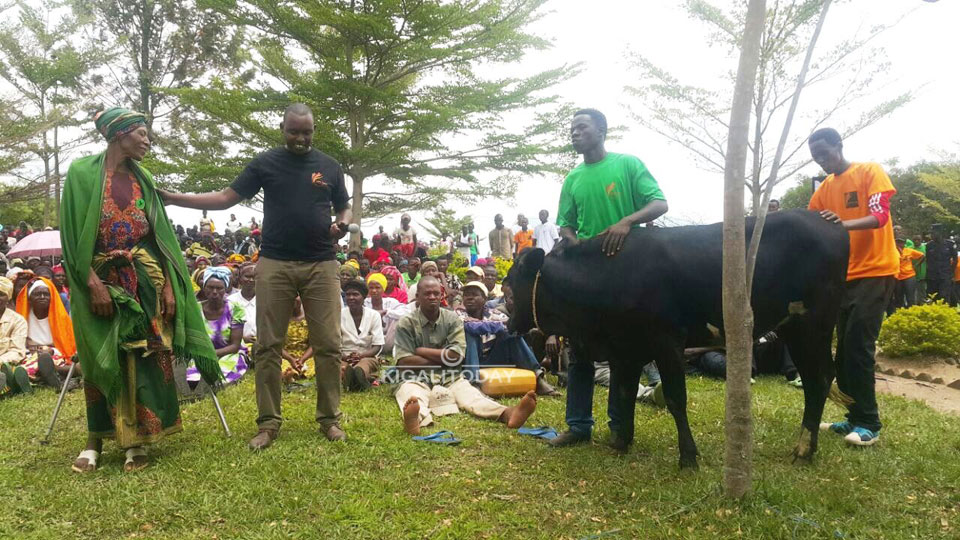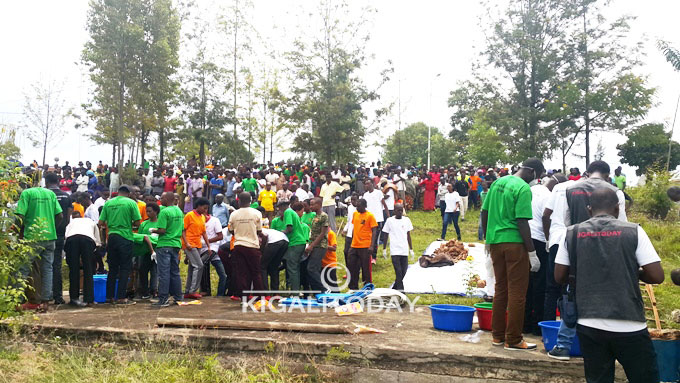
Rose Mukarurinda (standing left) saved a baby girl during the genocide.She breastfed and raised him and is now a 23 year-old university student
Hundreds of genocide victims at a site in Southern Rwanda were Saturday exhumed from a mass grave to be laid to rest in the officially designated Kinazi genocide memorial site.
The site in Kinazi sector of Ruhango district – was called Ntongwe commune during the 1994 genocide against Tutsi. 20,000 Burundian refugees had been residing in camp located in the same commune.
But when the hunt and mass slaughter of Tutsis began on April 7, government officials and soldiers ferried the refugees from village to village. The Tutsi were rounded and matched to local pitch.
A large pit measuring more than 50 square-meters wide and dozens or meters deep had been prepared years earlier. Tens of thousands were dumped there and covered by the killing machine.
Years later, the site was exhumed – bringing out more than 50,000 victims.
At the site exhumed today, it was established as a makeshift burial site in the immediate aftermath of the genocide. Victims were picked from farmland, hills and surrounding bushes.
A combined effort of genocide orphans and local residents was at work all day removing the remains. You could see the emotion on all faces of everyone as bones of victims were being brought up in basins and blankets.
Survivors of the carnage including Alex Rusagara said the Burundian refugees displayed strange cruelty. After killing the Tutsi, they performed rituals of cleansing themselves of the “demons of Tutsi” by removing hearts, roasting and eating them.
Witnesses, some of whom were among the killers say at the end of every day, they conducted body counts to check which Tutsi were not yet dead.
The survivors remember one name among the Burundians; Nzeyimana Khadafi. He was a leader of the refugees inside the camp. He has never been identified.
The Burundians returned to their country. The issue of Burundian genocide suspects remains one of the most difficult – as the current government in Bujumbura has recently doubted the genocide in Rwanda.
Amid the barbarity in Kinazi sector however, one woman did the unthinkable. Rose Mukarurinda, 51 years at the time, hid many Tutsi. Her family was targeted to force her change her mind. It all did not affect her heroism.
Mukarurinda also picked a three-month baby girl whose parents had been killed. She breastfed and raised her and is today a 23 year-old university student.
Back to the exhumation, those exhumed today will be washed and moved to Kinazi genocide memorial site – a stone throw distance away, which has more than 60,000 victims.
Final send off for the new remains will be held on March 30 – a week to the start of the three-month mourning throughout Rwanda.

A combined effort of genocide orphans and local residents exhume victims for relocation to memorial site

